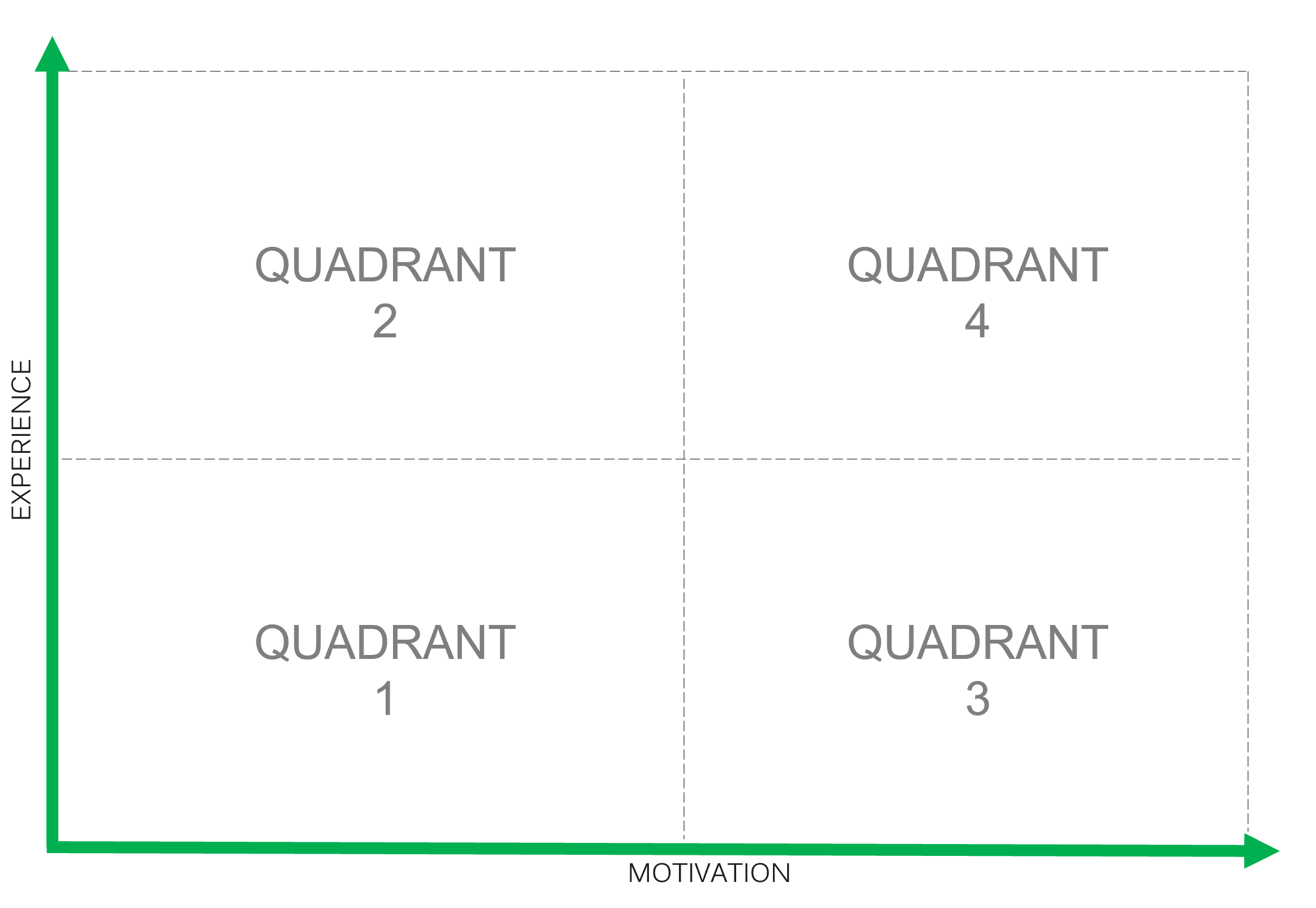Matt Willis, Chief Learning Experience OfficerParticipating in an online classroom is comparable to online learning in the same way that using Google Maps to locate the nearest branch of your bank is to online banking.
While many universities and vocational schools already had some online component, the impact of COVID-19 on face-to-face teaching meant that educational institutions with limited presence in the online learning space transitioned many courses and units online to preserve as many student enrolments as possible. During this period they were focused on replicating the physical classroom through online collaboration tools such as Microsoft Teams or Zoom to disseminate content.
While this was effective in the short term, typically it did not consider learner needs and while labelled as Online Learning, this was merely the shift to a digital classroom.
In this topic, we will learn about the following:
- Online students and their needs, wants and motivations
- Best practice for online learning
- Defining a learner journey and its importance
- The importance of the test, learn, and improve approach to continuous improvement
Before diving into these, let's start by looking at some of the myths and ill-conceptions around online learning.
So you may be coming into this course either thinking or having heard one or more of these statements:
- "Online completion rates are never as good as face-to-face"
- "Students don’t like studying online"
- "You can’t teach that online"
While in some cases these statements can be true, there is a good reason for them occurring and it has nothing to do with the modality! Online learning is merely a modality, it is not an educational strategy. Let's repeat that, online learning is a modality, NOT AN EDUCATIONAL STRATEGY!
Like all forms of education, online requires an educational strategy for the development and delivery of qualifications, not just a plan to put resources on a password-protected website.

So if you are thinking about developing online learning and one of these comes to mind, then it might be worth rethinking your approach:
- "I just need to put content on an LMS and… voila….. online learning"
- "Online learning = pedagogy"
The key to successful online learning is to start with the following questions:
- "Why does this course exist?"
- "Who is this course for?"
- "What will they think and feel?"
- "How will they develop skills and knowledge?"
As you can see through the question above, understanding your students is key to online learning. For those developing online programs, we will dive into the important theories and pedagogical frameworks in Module 2, but first, let's look into the different types of online learners.

Online learners want to fit education into their life, not their life into education.Matt Willis
Across all global educational markets, one of the largest contingent of students studying online is the working adult. These students have specific needs and can not commit to the requirements of part-time on-campus study. The working adult market is generally classified into five (5) persona groups:
- Career starter - This type of student is already working in the industry and requires a qualification or certification due to sector changes and or requirements of the employer.
- Career changer - This type of student has worked across multiple industries but has not yet found a career and is looking to find their path.
- Passion follower - This type of student has personal experience in the field and is seeking a deeper understanding. They may see this as a side Hussle in the future but in addition to their primary career.
- Encouraged employee - This type of student already holds qualifications and experience but wants to change industries into something they are passionate about.
- Ladder climber - This type of student is already working in the industry and wants to progress in their career.
Let's take a look through examples of each of these persona groups:
Career Starter

- Name: Emily
- Age: 23
- Gender: Female
- Occupation: Part-time Retail Associate
- Educational Background: High school certificate
- Current Goal: Finding a career path through online education
"I want to study to get the qualifications I need to get my career started"
Background
Emily is a young woman in her early 20s who has experienced the various challenges and opportunities that come with working part-time roles in different industries. She is constantly seeking ways to find a fulfilling career. Despite having worked across multiple sectors such as retail, hospitality, and customer service, Emily feels a sense of restlessness as she hasn't found the right fit for her career aspirations.
Motivation and Goals
Emily is enthusiastic about furthering her education to unlock more career possibilities and reach her full potential. She believes that obtaining the necessary qualifications through online education will be the stepping stone she needs to finally launch her desired career. Her motivation stems from a strong desire to prove her capabilities, gain financial independence, and make her family proud.
Challenges
- Limited Time: Juggling part-time work and studying can be overwhelming for Emily. She needs flexible learning options that fit her irregular work schedule
- Financial Constraints: As a part-time worker, Emily has limited financial resources to invest in education. She's looking for affordable online courses or programs.
- Directionless: Emily's experience in various industries has given her diverse skills, but she struggles to identify a clear career path. She seeks guidance and educational opportunities that can help her discover her true interests.
Aspirations
Emily's ultimate goal is to enrol in an online program that provides her with a recognized qualification in a field she's passionate about. She envisions herself excelling in her studies, gaining valuable industry knowledge, and finally breaking into a fulfilling career that aligns with her strengths and ambitions.
Career Changer

- Name: Anjali
- Age: 28
- Gender: Female
- Occupation: Corporate Administration (Maternity Leave)
- Educational Background: Undergraduate Degree
- Current Goal: Transition careers through online education
"I want to study to acquire the qualifications needed for a successful career change"
Background
Anjali is a motivated and determined woman in her late twenties, she is a dedicated mother who has taken time off from her career to care for her family. Anjali already holds qualifications and work experience but now aspires to transition into a career that aligns with the needs of her family.
Motivation and Goals
Anjali's decision to change careers is driven by her desire to pursue work that she finds more fulfilling and is more understanding of the needs of a working mum. She wants to set an example for her children and show them the importance of pursuing one's passions. Anjali is excited about studying online to gain new skills and qualifications that will empower her to make this transition.
Challenges
- Balancing her family responsibilities with her educational pursuits.
- Needs to find a way to study without compromising her role as a caregiver.
- Wants to invest in her education while managing household expenses.
Aspirations
Anjali envisions herself succeeding in her chosen field, one that resonates with her values and interests. She hopes to gain the knowledge and expertise required to excel in her new career, thus providing a better future for herself and her family.
PASSION FOLLOWER

- Name: Margaret
- Age: 60
- Gender: Female
- Occupation: Bookkeeper
- Educational Background: Vocational Qualification
- Current Goal: Learn practical skills in horticulture
"I want to learn more about something I am passionate about"
Background
Margaret is in her early sixties and has always had a deep love for flowers and gardening. She finds joy in spending time outdoors, tending to her garden, and learning about various plant species. Margaret's children are now grown and living on their own, giving her more time to pursue her interests.
Motivation and Goals
Margaret's passion for gardening has grown over the years, and she's now interested in formalizing her knowledge through education. She's excited about the prospect of studying horticulture to gain a deeper understanding of plant biology, cultivation techniques, and landscape design. Margaret's goal is to enhance her gardening skills and create a beautiful and thriving garden that can be enjoyed by her family, neighbours, and herself.
Challenges
- Margaret is not as familiar with online education platforms.
- Mindful of her time commitments and is looking for courses that can be completed at her own pace.
- Limited digital literacy skills.
Aspirations
Margaret aspires to become a knowledgeable and skilled horticulturist who can share her expertise with her local community. She dreams of organizing gardening workshops, participating in local garden shows, and fostering a sense of community through her love for plants and flowers.
Encouraged Employee

- Name: Tane
- Age: 35
- Gender: Male
- Occupation: Senior Marketing Specialist
- Educational Background: Bachelor's Degree
- Current Goal: Do this as quickly as possible
"Basically, I have to do this course as it is a requirement of my current role.”
Background
Tane is in his mid-thirties and currently works as a Senior Marketing Specialist for a technology company. He has been a reliable team member for several years but has not undertaken any formal study since completing his degree nearly 15 years ago.
Motivation and Goals
Tane's current motivation is driven by a recent requirement of his employer that mandates he obtain a certification in digital marketing for his role. The rapid evolution of digital marketing practices has prompted his employer to ensure that their marketing team is well-equipped to navigate the digital landscape effectively.
Challenges
- Managing the demands of his role and family and now studying.
- Maintaining motivation to complete something he doesn't feel like he needs.
- Feels like he already knows all of this information.
Aspirations
Tane's only aspiration is to get this done so he can keep his boss off his back and stay with the company.
Ladder Climber

- Name: Emma
- Age: 32
- Gender: Female
- Occupation: Mid Level Finance Manager
- Educational Background: Vocational Qualification
- Current Goal: Prove herself through education.
"I know I’m good at what I do, but I need better qualifications to really move up the ladder”
Background
Emma is a motivated and ambitious professional in her early thirties. She is dedicated to her career and is driven to achieve her goals. Emma currently works in the finance sector, where she has gained valuable experience and a reputation for her skills and dedication.
Motivation and Goals
Emma's motivation stems from her strong desire to advance in her career. She acknowledges her abilities and the positive impact she brings to her role, but she recognizes that to make significant progress and move up the corporate ladder, she needs to acquire better qualifications.
Challenges
- Wants to learn something new not relearn what she already knows.
- Doesn't want to waste time.
- Finding other students with no background is frustrating.
Aspirations
Emma aspires to advance to a managerial position within her finance sector. She envisions herself leading teams, making strategic decisions, and contributing to the growth of her organization. Emma's dedication to personal and professional growth reflects her commitment to achieving her long-term career goals.
To better understand these students we must consider both experience and motivation.
- Experience - the accumulation of practical knowledge, skills, and exposure that an individual has gained through their professional activities, training, and engagement in relevant tasks and projects.
- Motivation - the driving force that propels individuals to pursue their goals and engage in activities either for the sheer enjoyment and personal satisfaction they bring (intrinsic) or for the external rewards and recognition they offer (extrinsic).

Those who have had experience in the area of study will likely find the content to be easier than those who have not, while those who have more motivation to complete their studies tend to move through the course content and assessment faster than those who have less motivation.
Let's take a look at this in the concept of our personas.

Understanding learner personas will inform the educational strategy, delivery pattern and learner journey.
The ADDIE model was developed in the 1970s as a collaborative production between a branch of the U.S. military and the Center for Educational Technology at Florida State University. This collaboration produced the Interservice Procedures for Instructional Systems Development (IPISD), intended for the Army, Navy, Air Force, and Marine Corps and ultimately evolved into the ADDIE model we know today (Molenda, 2003).
ADDIE is an acronym representing Analyse, Design, Develop, Implement and Evaluate and is an instructional systems design (ISD) model and most other ISD models developed since are adaptations of ADDIE.
The simplicity of the ADDIE model makes it a popular starting point for learning designers. The model can be easily aligned with business objectives as each phase contains an outcome that neatly flows into the next phase.
The ADDIE model
Restrictions of ADDIE
Over the years, flaws in the ADDIE model have led to other educators revising and honing the model. It was identified that the model is restrictive when learning relies on user-generated content or where learning outcomes do not have a predetermined end state.
As such, ADDIE is best used for learning that requires creative thinking or abstract outcomes.
Click expand on each of them below to take a closer look at each phase of ADDIE.
In the analysis phase, training needs are addressed. A thorough assessment of requirements is vital at this stage to ensure that the learning goals and objectives are clear and that any potential issues can be identified.
This phase captures:
- audience;
- learning constraints;
- delivery options;
- pedagogical considerations; and
- project completion timeline.
At the design phase, decisions are made in relation to the method of learning – subject matter analysis, content, exercises, assessments (summative/formative), media, visual design, instructional style and technical considerations.
This phase provides specific details for learning in a logical and methodical manner.
This phase focuses on:
- documentation for the project’s design strategy;
- storyboard creation;
- user interface design;
- prototype creation; and
- graphic design.
The development phase involves developers/programmers assembling the content and creating assets as decided during the design phase.
After the development of assets, tests are performed and the project is reviewed and revised based on feedback from internal reviewers and/or user experience testers.
Implementation includes the creation of training procedures that covers the course curriculum, learning outcomes, method of delivery and testing procedures.
If there are assets such as books, equipment, tools and software required, or if logins and registration are needed, this will be handled during this phase. Any Learning Management System (LMS) or website hosting requirements will also be managed during this phase.
After the learning is delivered, the client/learner will provide feedback based on the experience of their own users. Any issues and edits are communicated during this phase and the course can be changed accordingly.
A survey at the end of a course is a good idea to allow learners to evaluate what they liked and disliked about the course content as well as how the course was presented. Feedback is valuable as a method of improvement.
Summary and Recommendation
- Engagement - Provide opportunities that stimulate motivation and enthusiasm for learning by engaging learners through their interests.
- Representation- Present learners with multiple ways to obtain information, cement their understanding and enhance their knowledge.
- Action and expression - Offer multiple ways for learners to demonstrate their skills and knowledge to boost creativity and enable sharing.
